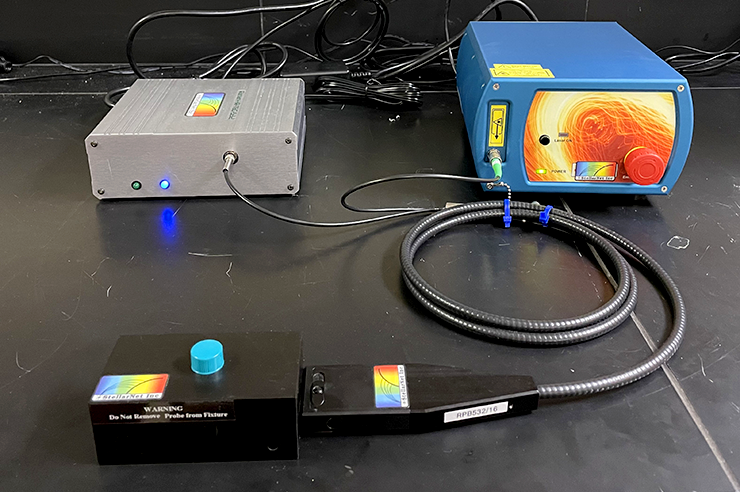A group of researchers at Hamline University recently received a grant from the Environmental Protection Agency (EPA) to research more cost effective methods for detecting lead in drinking water.
Lead-poisoning has several long-term health effects, including behavioral and learning effects, eye and hearing impairment and anemia among other things. Exposure to the heavy metal can happen many ways, including through paint in homes built before 1978 and drinking lead-contaminated water.
“No (amount of) lead is safe,” said Dr. Lifeng Dong, professor and physics department chair at Hamline University.
Testing for the heavy metal is not cheap or widely accessible. And unlike some other water quality concerns, lead does not visibly stand out in drinking water.
“If it doesn’t have color, it looks like it’s clean, you feel it’s safe; (but) actually it’s not safe to drink,” Dong said.
Some areas of the state continue to face concerns of lead in drinking water, although those areas with level violations have been declining in recent years.

Minnesota has more than 100,000 lead service lines in the state, according to the Minnesota Drinking Water Annual Report for 2022. The Safe Drinking Water Act requires municipalities to create inventory of those lines by 2024, and make plans to replace a certain number of them each year, Burman said.
Around half of the lead found in Minnesota drinking water comes from lead service lines, with the other half coming from plumbing within homes, said Tannie Eshenauer, the water policy manager at MDH.
A total of two public water systems exceeded the lead action level in 2022, which was a reduction of two violating systems from the previous year, according to the report. In St. Paul, around 28% of the city’s 96,000 properties use lead service lines.
“When I look at that number, I get shocked,” Dong said.
In 2017, a little more than 1% of children 6 years and younger in Ramsey County who were tested for blood lead levels had high “blood lead reference values” — meaning they had higher levels of lead compared to most children. In Hennepin County the same year, 0.8% of the children in that age range had high blood lead reference values.
In other areas in the state, like Polk, Winona, Kandiyohi and Mower counties, ranges from 2 to 2.5% of the children tested had high blood lead reference values, according to the 2017 lead surveillance data.
Same technology, new nanoparticle?
As a part of a university course last year, Dong had his students submit a grant proposal to the EPA detailing a plan to use a nanoparticle known as bismuth, rather than gold, which is often used for lead-detection. At the time of the group’s proposal, the average price of gold per gram was $57.9, while the average price of bismuth per gram was $0.0085 (less than 1 cent), according to their proposal.
While some affordable detection kits exist, the detection limits are not suitable for drinking water analysis, and therefore aren’t a useful solution, Dong said.
Without affordable lead testing, Dong fears people are drinking water that could be contaminated. Nationally, Black children and those living in households with incomes below 130% of the federal poverty level (FPL) were at increased risk for lead exposure, according to the 2011-2016 National Health and Nutrition Examination Survey.

Under the Safe Drinking Water Act, cities have begun efforts to replace existing lead service water lines. In Minnesota, there’s more than a dozen proposals so far, Burman said. St. Paul has begun the process to replace all of its lead water service lines within 10 years, but in the meantime, Dong wants to find better ways to test water.
Depending on what the researchers find this year, a new potential method could be used to expand lead detection. Dong hopes that the findings could create a new testing procedure that is more affordable, and could then be implemented in public areas like libraries and schools, for people to test their water with fewer cost barriers.


0 Commentaires